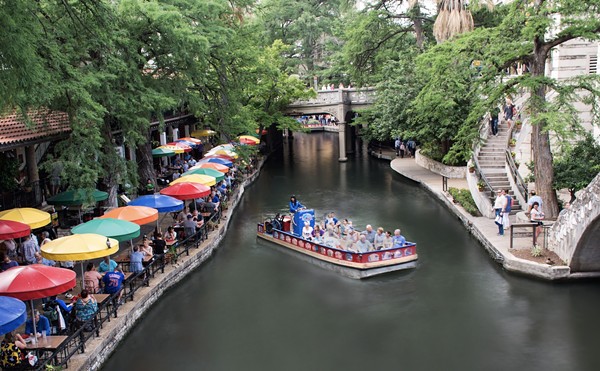OK, now, don’t go getting cocky. Just because you have graduated from thinking that white wine equals chardonnay to admitting that there is a place in the world for sauvignon blanc — and, if you have been especially precocious, pinot grigio (deduct points if it’s only Santa Margherita, however) — doesn’t mean there aren’t more merit badges to be earned. White-wine appreciation has come a long way from the days of under-ripe brie and bogus Chablis (at least among Democrats), and even confirmed boosters of Bordeaux and Burgundy will pay appropriate homage to the great whites of those two regions.
But in some wine-growing areas, we’re still a little color-blind — or color-biased, to be more precise. In Argentina, for example, all the big money is on malbec — with some lip service paid to cabernet. Yet scant attention is given to Torrontés, the signature white grape of Mendoza, and that’s a shame; it has some appealingly exotic qualities in the best hands. And in Spain, first-born Tempranillo gets all the press. In that country’s maritime northwest corner, however, one of the globe’s most glorious seafood wines is produced from the grape known as Albariño. That it’s the grape varietal that appears in large print on all wine labels — not, as in every other case, the region — should be an indication of the esteem in which it’s held in Spain.
To give place its due, however, Rías Baixas is the name of the denominación de origin. Though the region’s three subdivisions aren’t contiguous, they do share certain geographical characteristics — namely a filigree of fjords (the rías), orange trees in abundance, and riots of roses growing from ancient Roman walls. This information isn’t absolutely necessary to an appreciation of the wine, but I always think it helps to set the tone — even for me, as I have never been there and freely paraphrased all this, shamelessly, from another wine writer.
The wines themselves, however, can be experienced directly. In fact, I happen to have a glass in front of me as I write this. It’s a 2006 Albariño Pazo Señorans Rías Baixas, considered to be among the paragons of place. `Read more about it in The Best of Omniboire, page 12.` Not much is escaping from the glass at this particular moment — maybe a faint whiff of green apple, a little lime peel, some romantically imagined green almond … Honeysuckle and tropical fruit are said to be scented in certain vintages (the warm 2005, for example) and in bottlings from the warmest subregion.
The flavors are, if not singular, at least sensationally appealing: There’s a wonderful wet-rock quality, a snappy tang of lime, the merest whisper of a cool, spring-like herb such as tarragon. If it helps, think of Albariño as a sauvignon blanc with restrained citrus and enhanced minerality — but only as a springboard to other attributes. If you’re of a particularly poetic bent, you might be forgiven for imagining that the presence of the ocean nearby lends a tangy, salty quality.
Think of Albariño, too, as the perfect accompaniment to grilled fish (sea bass, not salmon), to raw oysters, or to seared scallops with a light citrusy sauce. Or imagine it, of a sultry afternoon, as a sipper with green olives, almonds, and salty, paper-thin slices of jamon serrano. (What grows together goes together is an old adage, though I admit to having difficulty fitting oranges and roses into the equation.) It should be noted that just across the border in Portugal, the same grape, known as Alvarinho, is used as part of a mix that comprises that country’s simple yet immensely popular vinho verde. Spanish Albariño may not be meant for ageing, but the spritzy vinho verde is expected to be consumed so fresh that a vintage date is often omitted from labels.
You’ll be accorded wine-wonk points if you can drop Albariño successfully into a conversation — or into the lineup for your next food event. Jaws will truly drop if you mention Xarmant Txakoli. (Pronounce this any way you like, as nobody but a Basque shepherd or separatist will be able to correct you.) This straw-colored wine, also very lightly spritzy, comes from the Txacoli de Alva D.O. in Spain’s opposite corner, and it possesses an odd but oddly appealing character. The bottle I sampled from the 2005 vintage offered flavors of green fig, again a little almond, maybe a slight woodiness. Citrus emerged after some time in the glass. “Bright, fresh and clean, it is perfect as an aperitif or with seafood,” claims the back label, and we aren’t in a mood to disagree. And at about $14, the esoterica quotient is very high indeed.














